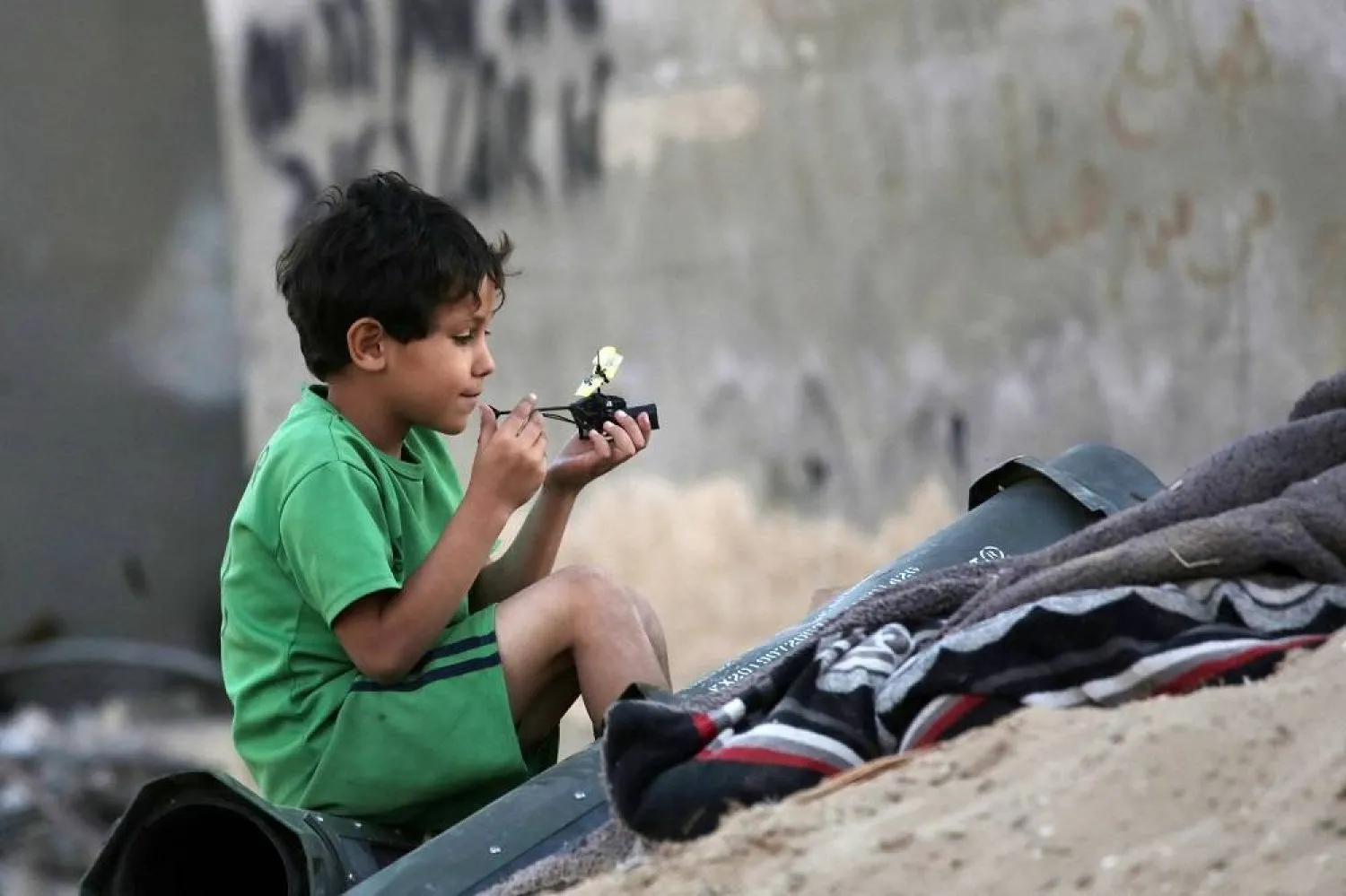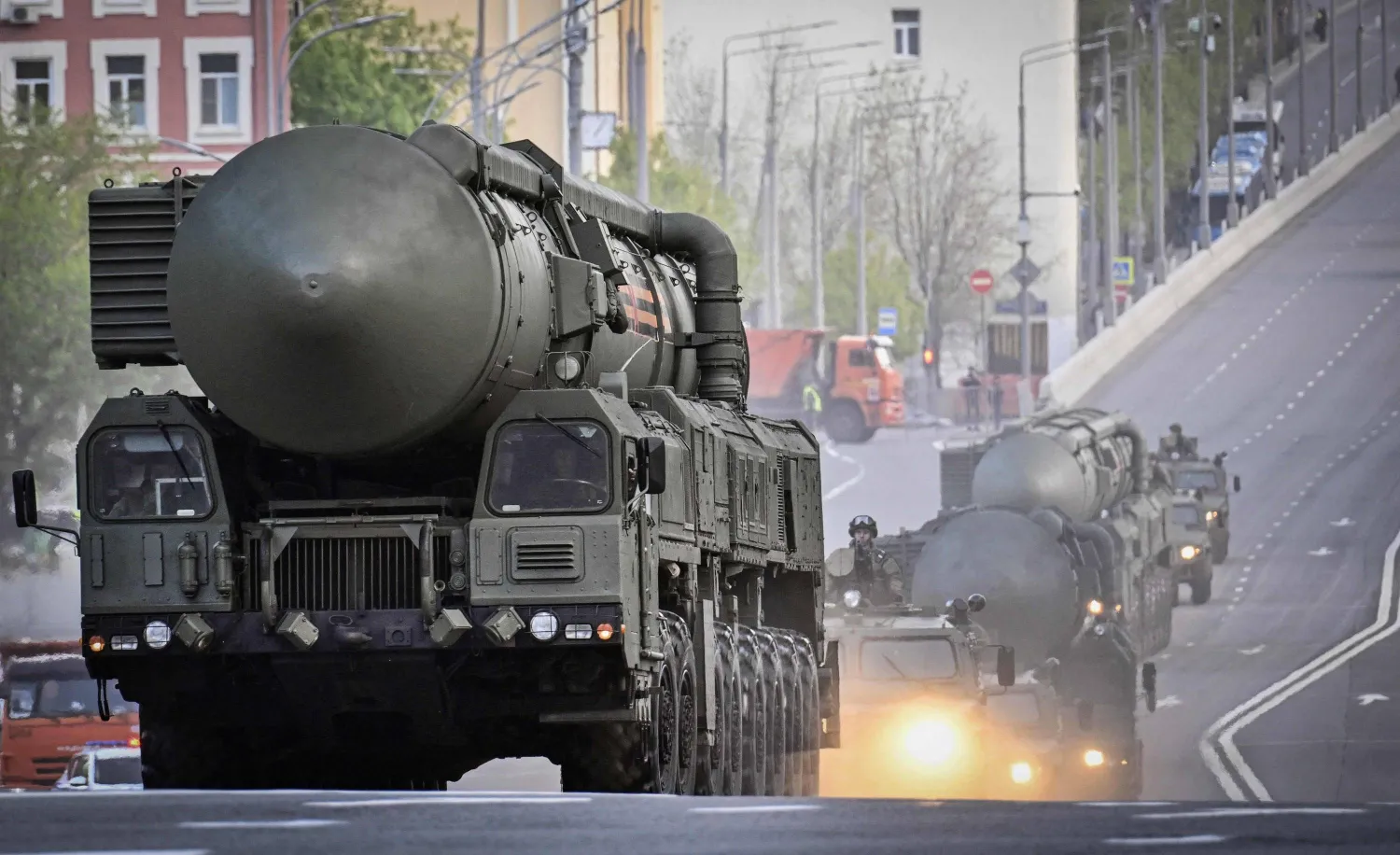Nabila Hamada gave birth to twin boys in Gaza early in the war, in a hospital reeking of decaying bodies and full of displaced people. When Israeli forces threatened the hospital, she and her husband fled with only one of the babies, as medical staff said the other was too weak to leave. Soon after, Israeli forces raided the hospital, Gaza’s largest, and she never saw the boy again.
The trauma of losing one twin left the 40-year-old Hamada so scared of losing the other that she became frozen and ill-equipped to deal with the daily burden of survival, The Associated Press said.
“I’m unable to take care of my other, older children or give them the love they need,” she said.
She is among hundreds of thousands of Palestinians struggling with mental health after nine months of war. The trauma has been relentless. They have endured the killing of family and friends in Israeli bombardments. They have been wounded or disfigured. They have huddled in homes or tents as fighting raged and fled again and again, with no safe place to recover.
Anxiety, fear, depression, sleep deprivation, anger and aggression are prevalent, experts and practitioners told The Associated Press. Children are most vulnerable, especially because many parents can barely hold themselves together.
There are few resources to help Palestinians process what they are going through. Mental health practitioners say the turmoil and overwhelming number of traumatized people limit their ability to deliver true support. So they’re offering a form of “psychological first aid” to mitigate the worst symptoms.
“There are about 1.2 million children who are in need of mental health and psychosocial support. This basically means nearly all Gaza’s children,” said Ulrike Julia Wendt, emergency child protection coordinator with the International Rescue Committee. Wendt has been visiting Gaza since the war began.
She said simple programming, such as playtime and art classes, can make a difference: “The goal is to show them that not only bad things are happening.”
Repeated displacement compounds trauma: an estimated 1.9 million of Gaza’s 2.3 million people have been driven from their homes. Most live in squalid tent camps and struggle to find food and water.
Many survivors of the Oct. 7 attack by Hamas in southern Israel that precipitated the war in Gaza also bear the scars of trauma, and are seeking ways to heal. Hamas killed more than 1,200 Israelis and took around 250 hostage.
Sheltering near the southern city of Khan Younis, Jehad El Hams said he lost his right eye and fingers on his right hand when he picked up what he thought was a can of food. It was an unexploded ordnance that detonated. His children were almost hit.
Since then, he experiences sleeplessness and disorientation. “I cry every time I take a look at myself and see what I’ve become,” he said.
He reached out to one of the few mental health initiatives in Gaza, run by the United Nations agency for Palestinian refugees, known as UNRWA.
Fouad Hammad, an UNRWA mental health supervisor, said they typically encounter 10 to 15 adults a day at shelters in Khan Younis with eating and sleeping disorders, extreme rage and other issues.
Mahmoud Rayhan saw his family shattered. An Israeli strike killed his young son and daughter. His wife's leg was amputated. Now he isolates himself inside his tent and sleeps most of the day. He talks to almost no one.
He said he doesn’t know how to express what’s happening to him. He trembles. He sweats. “I’ve been crying and feel nothing but heaviness in my heart.”
A relative, Abdul-Rahman Rayhan, lost his father, two siblings and four cousins in a strike. Now when he hears a bombardment, he shakes and gets dizzy, his heart racing. “I feel like I’m in a nightmare, waiting for God to wake me up,” the 20-year-old said.
For children, the mental toll of war can have long-term effects on development, Wendt said. Children in Gaza are having nightmares and wetting their beds because of stress, noise, crowding and constant change, she said.
Nashwa Nabil in Deir al-Balah said her three children have lost all sense of security. Her eldest is 13 and her youngest is 10.
“They could no longer control their pee, they chew on their clothes, they scream and have become verbally and physically aggressive,” she said. “When my son Moataz hears a plane or tank, he hides in the tent.”
In the central town of Deir al-Balah, a psychosocial team with the Al Majed Association works with dozens of children, teaching them how to respond to the realities of war and giving them space to play.
“In the case of a strike, they place themselves in the fetal position and seek safety away from buildings or windows. We introduce scenarios, but anything in Gaza is possible,” said project manager Georgette Al Khateeb.
Even for those who escape Gaza, the mental toll remains high.
Mohamed Khalil, his wife and their three children were displaced seven times before they reached Egypt. His wife and children arrived in January and he joined them in March. Their 8-year-old daughter would hide in the bathroom during shelling and shooting, saying, “We are going to die.”
Their 6-year-old son could sleep only after his mother told him that dying as a martyr is an opportunity to meet God and ask for the fruits and vegetables they didn’t have in hunger-ravaged Gaza.
Khalil recalled their terror as they escaped on foot down a designated “safe corridor” with Israeli guns firing nearby.
Even after arriving in Egypt, the children are introverted and fearful, Khalil said.
They have enrolled in a new initiative in Cairo, Psychological and Academic Services for Palestinians, which offers art and play therapy sessions and math, language and physical education classes.
“We saw a need for these children who have seen more horror than any of us will ever see,” said its founder, psychologist Rima Balshe.
On a recent field trip, she recalled, 5-year-old twins from Gaza who were playing and suddenly froze when they heard helicopters.
“Is this an Israeli warplane?” they asked. She explained it was an Egyptian aircraft.
“So Egyptians like us?” they asked. “Yes,” she reassured them. They had left Gaza, but Gaza had not left them.
There is hope that children traumatized by the war can heal, but they have a long way to go, Balshe said.
“I wouldn’t say ‘recovering’ but I certainly see evidence of beginning to heal. They may not ever fully recover from the trauma they endured, but we are now working on dealing with loss and grief,” she said. “It’s a long process.”
Bedwetting, Nightmares and Shaking. War in Gaza Takes a Mental Health Toll, Especially on Children

A Palestinian child plays next to empty ammunition containers in Khan Younis in the southern Gaza Strip on May 16, 2024, amid the ongoing conflict between Israel and Hamas. (AFP)

Bedwetting, Nightmares and Shaking. War in Gaza Takes a Mental Health Toll, Especially on Children

A Palestinian child plays next to empty ammunition containers in Khan Younis in the southern Gaza Strip on May 16, 2024, amid the ongoing conflict between Israel and Hamas. (AFP)
لم تشترك بعد
انشئ حساباً خاصاً بك لتحصل على أخبار مخصصة لك ولتتمتع بخاصية حفظ المقالات وتتلقى نشراتنا البريدية المتنوعة







